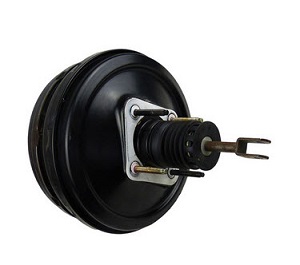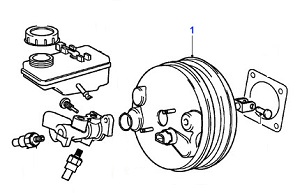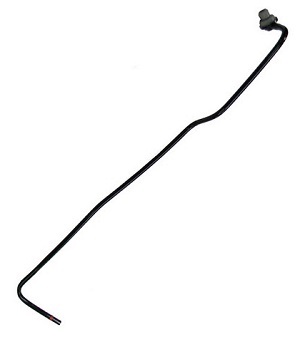By Gary Ilcyn, CEO and Jaguar Enthusiast at Jagbits Inc.
The brake booster is a crucial element in the braking system of Jaguar models, designed to enhance the force applied to the brake pedal. This amplification allows for smoother and more effective stopping power. However, like any mechanical component, the booster can wear out over time, leading to diminished performance and potential safety hazards. This guide will help you identify signs of a failing unit, explore repair options, and provide maintenance tips to keep your vehicle in optimal condition.
Recognizing Symptoms of a Failing Brake Booster
Being aware of the signs that indicate a malfunctioning brake assist system is essential for ensuring your vehicle’s safety. Here are some common indicators that may suggest your braking system requires attention:
- Stiff Brake Pedal: If the pedal feels unusually hard when pressed, it may signal an issue with the booster.
- Extended Stopping Distances: A noticeable increase in the distance required to stop can indicate problems within the braking mechanism.
- Hissing Noises: A hissing sound when applying the brakes could suggest a vacuum leak in the system.
- Warning Light Activation: If the brake warning light illuminates on your dashboard, it may point to a malfunction in the braking system.
Repair Options for the Brake Assist System
When faced with a malfunctioning booster, vehicle owners have several repair options to consider:
1. Rebuilding the Existing Unit
Rebuilding the brake assist unit can be a cost-effective solution if the main body is still in good condition. This process typically involves replacing worn components such as the diaphragm and seals. Various kits are available specifically for Jaguar vehicles, making this a viable option for many owners.
2. Purchasing a Replacement Unit
If rebuilding is not feasible, acquiring a new or refurbished booster is the next step.
Maintenance Strategies for Brake Assist Systems
To prolong the lifespan of your brake booster, regular maintenance is crucial. Here are some effective strategies:
- Inspect for Fluid Leaks: Regularly check for any signs of brake fluid leaks around the booster area.
- Examine Vacuum Lines: Ensure that the vacuum lines connected to the booster are intact and free from damage.
- Listen for Anomalies: Be attentive to any unusual sounds when applying the brakes, as these may indicate underlying issues.
Understanding the function and maintenance of the brake assist system in your vehicle is essential for ensuring optimal performance and safety. By being aware of the symptoms of failure, exploring repair options, and adhering to maintenance best practices, you can keep your car in excellent condition.
Understanding Brake Booster Functionality
The brake booster operates by using vacuum pressure to assist in applying the brakes. When the driver presses the brake pedal, the booster amplifies this force, allowing for easier and more effective braking. Understanding how this component works can help you appreciate its importance in your vehicle’s safety and performance.
Pros and Cons of Replacing the Brake Booster
When considering whether to repair or replace the brake booster, it’s essential to weigh the advantages and disadvantages:
| Pros | Cons |
|---|---|
| Improved braking performance | Cost of replacement can be high |
| Enhanced safety features | Time-consuming installation process |
| Increased vehicle reliability | Potential need for additional repairs |
| Access to warranties on new parts | May require professional installation |
Contact the Author
Gary Ilcyn
Santa Barbara, California, USA
[email protected]
Note:
* This article has been peer-reviewed and held to the highest editorial standards.
** Image may not represent actual part.
Key Considerations for Brake Booster Replacement
Before proceeding with a replacement, consider the following factors:
- Vehicle Age and Mileage: Older vehicles or those with high mileage may benefit more from a complete replacement.
- Driving Conditions: If you frequently drive in heavy traffic or hilly areas, a reliable brake system is crucial.
- Cost vs. Benefit: Evaluate whether the cost of a new booster is justified by the potential improvements in safety and performance.
- Professional vs. DIY: Consider whether you have the skills and tools necessary for a DIY replacement or if hiring a professional is more practical.
Frequently Asked Questions (FAQs)
1. How often should I check my brake booster?
It’s advisable to inspect your brake system, including the booster, during regular vehicle maintenance or at least once a year.
2. What are the signs that my brake booster needs replacement?
Common signs include a hard brake pedal, extended stopping distances, and unusual noises when braking.
3. Can I drive with a failing brake booster?
While it may be possible to drive with a failing booster, it is not recommended due to the increased risk of brake failure and reduced stopping power.
Last Word
Maintaining the brake assist system is vital for the safety and performance of your vehicle. By understanding the signs of a failing booster, exploring repair options, and adhering to maintenance best practices, you can ensure that your car remains in excellent condition. Whether you choose to rebuild or replace the unit, being informed will help you make the best decision for your driving needs.









